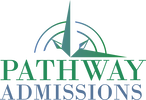 As juniors begin to build or finalize their college lists this spring and the air is filled with chatter from seniors and their families about college admissions outcomes, it's a good time to remind students and parents that many times a decision has absolutely nothing to do with what the student did or didn't do. That's right -- it's mostly not about YOU, it's about THEM. It's about the colleges and what they need and/or want. There are some factors that are definitely within the control of a student -- the rigor of the courses you took, the grades you earned, the test scores you achieved, the activities you led or participated in, the hobbies and interests you pursued, the focus you applied to selecting a balanced list of colleges to apply to, the care you took to select a teacher who would be likely to write you a great letter of recommendation, the effort you put into crafting a strong college resumé and compelling application essays, and the time you devoted to visiting and/or interacting with your top choice colleges. But even doing all of that may not be enough for every college on your list, and that's neither your fault nor within your control. COLLEGES ARE A BUSINESS It's important to never lose sight of the reality that colleges operate with both a mission . . . and a bottom line. And like any business, the bottom line is always top of mind. Many colleges need a certain percentage of "full-pay" students in any given year. Some public state universities are subject to ever-shifting funding priorities at the state legislative level. Some small private colleges may be mindful that they are only a few missteps from financial insolvency. Most colleges suffered some financial losses during the pandemic. Enrollment management for colleges is its own industry. Many colleges employ enrollment managers and consultants who use algorithms and other methods to try and pinpoint that sweet spot where they've accurately predicted how many students they need to offer admission to in order to yield the size class they can comfortably house and educate. There are only so many dorm rooms (the University of Tampa is a good example of a school that completely misjudged their housing parameters, which was a mess for them and for the students who scrambled to find apartments), and overcrowded classrooms will also not be popular with students, faculty, or alumni. Some colleges over-enrolled (or under-enrolled) during the pandemic years and will be adjusting course to correct for those issues. And speaking of enrollment management, one of the tools that colleges are increasingly using to manage their yield (percentage of accepted applicants that say "yes" to the offer) is early decision or ED. Some colleges offer ED and early action (EA), some colleges offer ED1 and ED2 (two cycles of early decision) -- but in either case, they are using ED to fill a successively larger chunk of their classes. Many colleges will fill 50% of their class through ED, and we are hearing some colleges are filling as much as 75% with ED applicants. This is yet another factor that makes it very difficult for a student to receive an offer of admission in the regular decision round. INCREASING APPLICATIONS: VICIOUS CYCLE As more colleges join the CommonApp each year, it has become easier for students to apply to more colleges. The pandemic introduced another element with most colleges offering test-optional admissions for at least 1-3 years. Many students adopted a "why not apply and see" attitude once the test score component was no longer part of the equation. These are but two of the factors that have led to many colleges experiencing skyrocketing application numbers. Colleges still have mostly the same number of seats per class to offer, so as application numbers rise, their acceptance rate goes down. The lower the acceptance rate, the more "selective" a college appears (and the better their rank on the various rankings list will be), which in turn fuels ever-escalating rates of application. As acceptance rates trend down at so many colleges, many students panic and increase the number of applications they submit, and so it goes. BUILDING A CLASS Selective colleges could fill their class ten times over with amazing and accomplished students. Most applicants at these colleges have perfect grades and test scores. There are nearly 27,000 high schools in the US, and the valedictorians from those schools won't all gain admission to selective universities. No college -- not even an Ivy League institution -- wants a class comprised solely of valedictorians and salutatorians. Every college wants to enroll a diverse class, with students from a variety of backgrounds and who bring diverse viewpoints to conversations in and out of the classroom.
The other variables -- the ones that are absolutely not within your control and change from one year to the next for any given college -- are institutional priorities.
There are probably dozens of other factors that contribute to admissions outcomes. But all you, the student, can do is put your best foot forward, apply to a balanced list of colleges so that you have good choices, and don't focus too heavily on any one college or type of college. Colleges are building a class and are juggling a host of competing and possibly incongruent goals and objectives. At the end of the day, remember, it's not a personal rejection -- it's not about YOU, it's that myriad of shifting priorities of the college in any given year. You will thrive and be successful wherever you end up!
0 Comments
|
Archives
July 2022
Categories
All
|

 RSS Feed
RSS Feed
